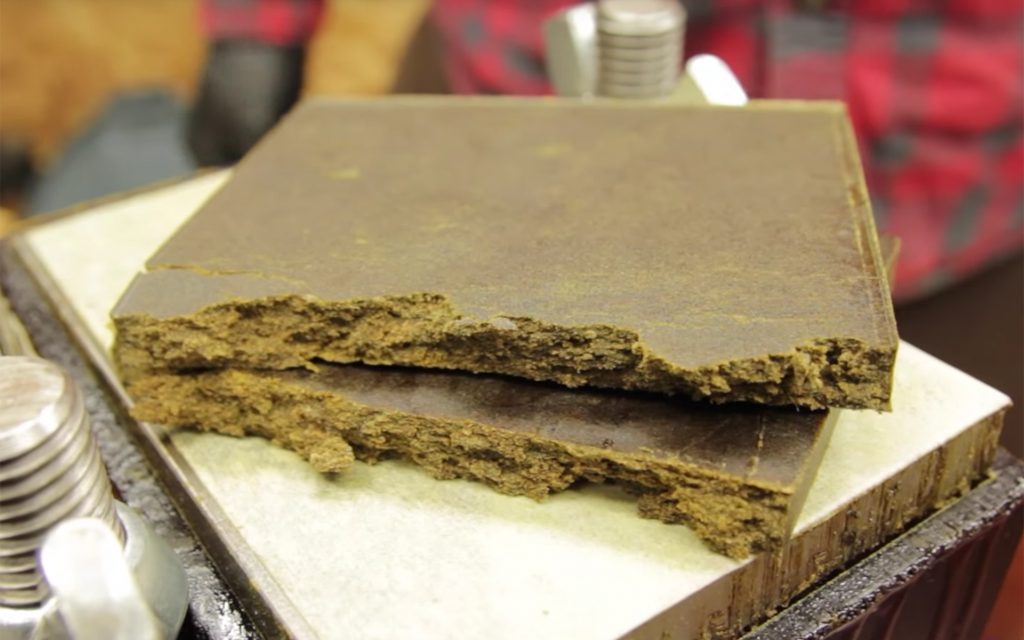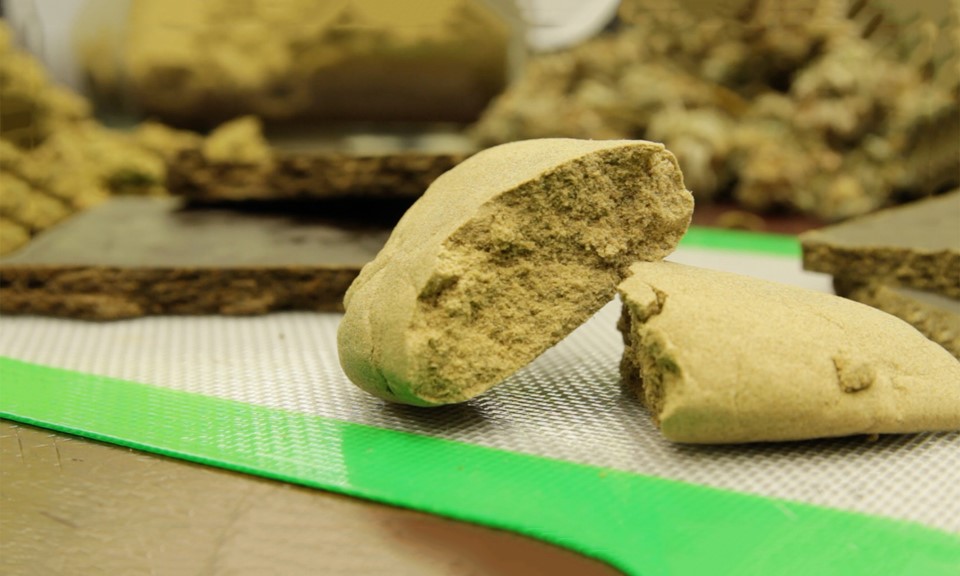Cannabis 101 Cannabis education and information on ways to consume, how to grow or harvest, and more.
To understand what hashish is means to realize the duality that exists with the female cannabis Sativa plant. First, there is the physical structure of the plant itself, which is this rich fibrous leafy material complete with essential amino acids and a myriad of benefits. Second, you have the essence of the cannabis plant, otherwise known as trichomes, which are responsible for producing the aromatic terpenes and medicinal cannabinoids that facilitate our therapeutic experiences.
Hashish is the moment at which the essence of cannabis (the trichomes) parts ways with the plant material itself. This is achieved when the ripe and resinous gland heads that line the surface of female cannabis plants are separated and collected. Processes to achieve resin separation have been practiced for centuries; however, the rapid rise of cannabis legalization in the western world has brought new methods in hash preparation that are sweeping legal markets by storm.
Where Does Hash Originally Come From?

The word “hashish” originates from the Arabic language, roughly translating to mean “grass.” It is believed that the popularization of hash originated around A.D. 900, although some argue methods such as “charas,” or the collection of resin from the hands of cannabis farmers, are believed to have existed prior to written documentation.
As a result of early European exploration into Africa, hashish made its appearance in the western world at the turn of the 19th century. For years, European doctors imported hashish to conduct research, which led to the introduction of various extraction methods that allowed for further refinement into medications.
By the turn of the 20th century, cannabis extractions were accounting for a large majority of western pharmacopeia. It wasn’t until U.S. prohibition in the early 20th century that hashish products were eradicated from western medicine and pushed back into the black market.
Different Types of Hash

With the reemergence of cannabis enthusiasm culminating in the 1960’s, hashish found its way back into the limelight. Countries such as Nepal, Afghanistan, and Morocco saw an increase of hashish exportation into western countries as a result of cannabis interest hitting the mainstream for western tourists. At this time the varieties of hash being imported were old world varieties, mainly hard-pressed, brick-like solids made from heat and pressure.
It wasn’t until the late 1980’s when gland separation was introduced to the west through a machine called the “master sifter.” According to Ed Rosenthal and his book Beyond Buds, this breakthrough machine by John Gallardi used vibration to separate the gland heads from the plant material.
During this time, Neil Schumacher and Rob Clarke began experimenting with water extraction methods, the early precursor for what we now refer to as water hash, or IWE (ice water extract). The equipment used to popularize the ice water extraction method was first introduced to the public in 1997 by Reinhard C. Delp at the High Times Cannabis Cup. His patents would later be adapted and modified by Mila Jansen with her “pollinator” isolation bags. This design would be further improved upon by Canadian hash enthusiast Marcus “Bubbleman” Richardson and his popular line of BubbleBags, one of only a handful of companies worldwide who have leased permissions to use methods from the original patent that was filed in 1999.
How to Make Hash
Legalization efforts in the U.S. over the last half decade has significantly impacted the emergence of hashish enthusiasm. The Internet’s mass proliferation and dissemination of free information has also made previously proprietary hashish making techniques readily available.
Making hash at home today is as easy as purchasing a few inexpensive ingredients from a hardware store. You can even purchase ready-made screens for dry extractions, presses for old school brick hash preparations, or even bags for water extractions all online. Learning how to make hash at home today is incredibly easy with the availability of information through the internet and social media.
To learn how hash is made, check out our Cannabis Craftsmanship video on how to make hash featuring the experts at Funky Skunk Extracts.
How to Use Hash

Hash may be used in a number of ways. Traditionally, hash has been consumed orally, either as a solid or infused into a beverage such as the traditional Indian drink bhang. Hash may also be smoked, either on its own or as a way to accompany traditional cannabis flowers.
Some varieties of hashish that have the ability to melt may also be vaporized on a hot surface, otherwise known as dabbing. When dabbing hashish, screens are often used due to the fact that some resins leave carbon residue and will not melt completely, or at all. On the other end of the spectrum are high-quality hash oils (not to be confused with solvent extracts) such as full melt dry sift and full melt ice water hash that have the ability to melt completely onto a nail, leaving zero residue.
When first learning how to use hash, consult with your budtender about the equipment you have at home to see what products are right for you. To get started with smoking or vaporizing hashish, you will need some sort of smoking contraption such as a pipe or dab rig, possibly a dabber tool and heating mechanism, depending on which route you take.
Always remember that hash effects will be much stronger than smoking cannabis as the concentration of cannabinoids is much greater. Hash oil potency can range from low 40% to over 80%, depending on factors such as extraction technique and quality of starting material.
The emergence of hashish into the canon of mainstream cannabis consumption speaks volumes about its enduring popularity. Today, hash products ranging from old world pressed varieties to full melt water hash are available in almost every market. With the rise of dabbing culture fueling a booming uptick in cannabis concentrates, hashish has secured its footing in the ever-changing climate of the cannabis industry.
The post What is Hash and How Does It Relate to Cannabis? appeared first on Leafly.
from
https://www.leafly.com/news/cannabis-101/what-is-hashish












Great explanation of hash! Have you tried Ice Water Hash before? It’s an easy and natural way to make hash without using any chemicals. Thanks for sharing!
ReplyDelete